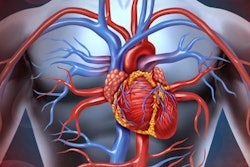Noninvasive cardiac imaging tests lead to reduced downstream costs, and stress echocardiography may be the go-to modality with this in mind, according to Canadian research published November 14 in the Journal of the American Society of Echocardiography.
A team led by Idan Roifman MD, from the University of Toronto found that stress echocardiography led to an 18% reduction in costs, while cardiac CT angiography (CCTA) and myocardial perfusion imaging led to the highest downstream costs.
“These findings may help inform testing decisions in chest pain patients,” Roifman and colleagues wrote.
Previous reports indicate that non-invasive cardiac diagnostic tests for diagnosing coronary artery disease cost more than $3 billion annually in the U.S. alone. This finding has led to healthcare organizations evaluating their practices over concerns of overuse. The researchers noted that this makes cost comparisons for different noninvasive testing strategies important for healthcare planning.
Roifman et al sought to do just that, using population-based administrative and clinical data to compare downstream costs between four available noninvasive testing strategies among patients presenting with chest pain. These included stress echocardiography, CCTA, myocardial perfusion imaging, and exercise stress testing.
The researchers included data from 481,170 patients who received one of these tests. Among these, 254,492 (53%) received an exercise stress test; 154,137 (32%) received myocardial perfusion imaging; 69,160 (14%) received a stress echocardiogram; and 3,381 (< 1%) received a CCTA exam.
The team found that after adjustment for differences in baseline patient characteristics and despite the added cost of the initial tests themselves, receiving any of these tests was tied to a 12% reduction in downstream one-year average costs. This included a cost ratio of 0.88 compared with patients without any testing.
The researchers also compared each different testing strategy with no testing. The group found that stress echocardiography and exercise stress testing led to lower downstream costs, with cost ratios of 0.82 and 0.8, respectively. Conversely, myocardial perfusion imaging had a cost ratio of 1.26 while CCTA had a cost ratio of 1.29, meaning higher downstream costs.
The study authors highlighted that their results suggest that the initial cost of testing is more than offset by healthcare cost savings downstream. They also suggested that stress echocardiography is the least expensive modality given that stress imaging and anatomical testing is “largely equivalent” in terms of downstream clinical outcomes.
“This is especially important in healthcare systems that do not require pre-approval for stress echocardiography, such as many systems in the U.S.,” the authors wrote.
They also called for similar studies to be performed in other jurisdictions to find out whether these trends are similar in other settings.
The study can be found in its entirety here.



















